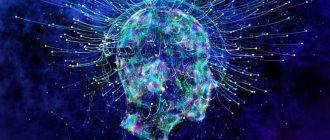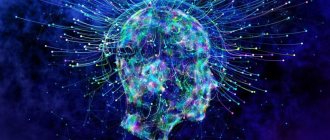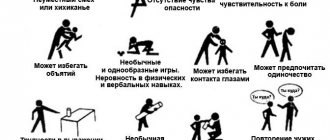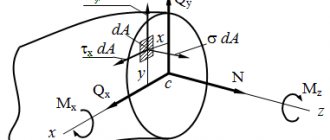Causes
The causes of confusion are varied:
- Genetic predisposition (weakness of mental activity);
- Mental illnesses (schizophrenia, bipolar personality disorder);
- Chronic stress;
- Traumatic brain injuries;
- Past infectious diseases;
- Pathology of the cardiovascular system (atherosclerosis, myocardial infarction);
- Systemic diseases (diabetes mellitus, hyperthyroidism);
- Hemorrhages in the brain;
- Neurological pathology (Alzheimer's disease, epilepsy);
- Alcohol abuse, drug use;
- Irrational use of drugs;
- Oncology.
The state of confusion develops against the background of organic or functional changes in the brain. Twilight disorder often accompanies epilepsy, which is associated with a disorder in the structure of certain groups of nerve cells. In addition to epileptic changes, intracerebral tumors, traumatic brain injuries, neuroinfections, etc. can be a provoking factor. Among the functional causes are hysterical psychosis and traumatic events that are unexpected for the patient.
Symptoms more often occur in adulthood, since these causes are observed less frequently in children. With hysteria and early manifestations of epilepsy, confusion may develop in children. A psychiatrist deals with the diagnosis and treatment of the disease, regardless of the patient’s age.
Varieties of the condition
In psychiatry, there are several variants of twilight stupefaction, which depends on the reasons that caused it:
- psychotic – develops against the background of hysterical psychosis and other changes in the human mental sphere;
- non-psychotic – associated with organic pathologies of the structures of the central nervous system.
Symptoms are heterogeneous. Depending on the predominant clinical manifestations, the following are distinguished:
- delusional disorder – accompanied by the formation of delusions, which determines the patient’s behavior at the time of disturbance of consciousness;
- dysphoric type - characterized by affective disorders, the patient expresses melancholy, fear or anger;
- with the hallucinatory variant, the clinical picture is dominated by hallucinations and illusions, their nature can be different: auditory, visual, etc.
Oneiroid is classified as twilight. This is a condition accompanied by the appearance of colorful hallucinations with fantastic content. Against this background, there is a decrease in overall activity and the possible development of catatonia.
Psychiatrists divide non-psychotic disorders into four types:
- ambulatory automatisms;
- somniloquy;
- somnambulism;
- trance.
Somniloquy and somnambulia mean talking and sleepwalking, respectively. Outpatient automatism is a disturbance of consciousness with the occurrence of automatic actions of a different nature in the patient. If the patient does not regain consciousness for a long time at the time of the disorder, then they talk about trance.
Delirium
The delirious manifestation of changes in consciousness, the so-called delirious syndrome, is directly opposed to the diagnosis of stunning. The disease is active, the patient has visions that are not related to the surrounding reality, he lives in his own world of hallucinations. Delusions of persecution and grandeur may appear.
The patient sees non-existent persons, himself in the role of someone, and participates in actions with imaginary creatures from his visions. The patient may move actively, sparks appear in the eyes, and there is confusion in the head. He may talk about people and activities that are not really there, but the patient will insist: “I hear voices!” Auditory and visual hallucinations occur throughout the course of the disease.
The patient understands who he is, but is not aware of who surrounds him; the twilight stupefaction does not allow him to determine his location. The disease progresses at the end of the day and before bedtime. These types of patients rarely have a clear mind. During an exacerbation of the disease, they go deep into their own consciousness, say little, their speech is quiet, commenting on visions and actions outside of time and the people nearby.
Description
It usually appears suddenly, does not last long and ends suddenly, which is why this disorder is called transient, transient[1].
It is accompanied by speech motor agitation or outwardly ordered behavior, an affect of fear, melancholy, anger, acute figurative delusions and a sudden influx of hallucinations [1]. Hallucinations are usually frightening (mainly visual). The delusional ideas that arise in this case (usually persecution, less often greatness) determine the patient’s behavior.
The duration of the state of stupefaction in epileptics is quite long - up to several days [2].
Characterized by complete forgetting of the period of darkened consciousness (total amnesia). With this disorder, unlike delirium and oneiroid, there are even no memories of subjective experiences[1].
Clinical picture
The clinic identifies the following types of twilight stupefaction:
- Crazy option. Outwardly, the patient’s behavior is orderly, however, he is characterized by silence, an absent gaze and special concentration [1] [2]. Aggressive destructive actions that a patient in this condition can perform can give the impression of premeditated and planned actions[1]. After emerging from the state of stupefaction, the patient treats the committed actions as alien to his personality [1].
- Hallucinatory version. The predominance of hallucinatory experiences is characteristic. A pronounced state of agitation with aggressive and destructive actions[1]. In practice, it most often occurs in patients with epilepsy[2]. Psychosis usually begins with illusions, and then hallucinations appear (visual, auditory, general senses)[2]. Patients can see blood, red color, sparks, and hallucinations often take on a frightening character [2]. Patients experience horror and inflict crushing blows; as a rule, even several healthy and strong people cannot restrain them [3] [2].
- Oriented (dysphoric) twilight stupefaction. The depth of stupefaction fluctuates, elementary orientation in the environment is often preserved, patients can recognize familiar people[1]. There are fragments of self-awareness[1]. Hallucinations and delusions are either completely absent or episodic[1]. The typical affect is fear and anger[1].
- Outpatient automatism is a twilight stupefaction without hallucinations, delusions and changes in emotions [1]. Patients with this disorder perform automated actions and movements. They can make unconscious journeys along the street, and quite long ones at that: there is a known case of a patient traveling from Mumbai (Bombay) to Calcutta in a state of mental automatism[2].
- Drowsiness is a disturbance of consciousness and perception caused by a sudden awakening from the slow-wave sleep phase (usually at the beginning of sleep). Accompanied by increased aggressiveness and inability to adequately perceive the environment. Possible affect. The condition is short-lived, and the person almost always forgets the events that happened at that moment. Occasionally it occurs even in healthy people, if the sleep was very sound and the irritant was strong.
Twilight stupefaction
This is the most short-term type of change in consciousness. It can last seconds, sometimes we are talking about several days. The patient recovers from this state quickly, usually through a long sleep phase. Often such a patient does not arouse suspicion among others. Acts distant and does not understand what is really happening.
But sometimes the disease manifests itself more actively. A person is haunted by a feeling of fear, anxiety, and may begin to show anger. It is expressed in movements, speech and actions. The patient may be accompanied by attacks of rage, during which he attacks others, breaks furniture, and destroys objects. He is under the influence of delusions and hallucinations. When the attacks subside, the person does not remember his actions.
Possible complications
Psychiatrists divide the negative consequences of the disorder into two groups: those associated with the primary disease and those associated with inappropriate human behavior. Twilight stupefaction can occur against the background of organic pathology, and therefore characteristic complications may include:
- With epilepsy, personality disorders develop - isolation, indifference to others. Gradually, apathy towards work and hobbies appears. This is due to organic changes in the nerve centers in the cerebral cortex, as well as side effects of long-term use of antiepileptic drugs.
- With the growth of intracerebral tumors, the neurological deficit gradually increases. Sensory disturbances, movement disorders, blurred vision, etc. may occur. With rapid growth of the tumor, there is a risk of displacement of brain structures with their pinching in the foramen magnum, which can be fatal.
Diagnostic measures
In identifying a disorder, psychiatrists rely on the clinical picture of the disorder and the testimony of loved ones, colleagues and other eyewitnesses. During twilight stupefaction, patients often commit crimes, so they undergo a forensic psychiatric examination. As a rule, it includes not only an examination by a psychiatrist, but also familiarization with the materials of the criminal case, etc.
To identify the immediate cause of the development of symptoms, a comprehensive examination is carried out:
- Conversation with the patient and his relatives.
- General examination and neurological examination. This makes it possible to detect diseases of the brain or internal organs that can cause mental disorders. It is important to establish the fact of past traumatic brain injuries, neuroinfections, as well as tumors in the structures of the central nervous system.
- Electroencephalography (EEG), computed tomography or magnetic resonance imaging. The methods make it possible to study the state of the structures of the central nervous system and identify deviations in their structure. If atherosclerosis of the cerebral arteries is suspected, an ultrasound with Doppler sonography is performed.
Only a specialist - a psychiatrist or neurologist - should interpret the results obtained. Attempts at self-diagnosis can lead to progression of the underlying disease and the development of complications.
A differential diagnosis with delirium is mandatory. An important difference is the absence of memories of the period of impaired consciousness. They may partially persist if symptoms occur against the background of hysterical psychosis. In addition, the fact of a history of epilepsy and other organic diseases of the central nervous system testifies in favor of twilight disorder.
Drowsy stupefaction
There is such a thing as drowsy twilight stupefaction. This is a manifestation of the disease during a sudden awakening of the patient from a state of sleep. A disturbance of consciousness occurs. Symptoms: attack of fear, the patient is afraid of people around him, makes the same movements. The active phase lasts about 10-20 minutes, after which the patient falls into a long sleep. It is rare, but a person can vaguely remember what happened to him.
You need to understand that clouding of consciousness in a person in the form of delirium, stupor, amenia in most cases is provoked by infectious diseases, poisoning due to intoxication with a chemical substance, encephalitis, etc.
Damage to the blood vessels and nervous system in the above diseases can lead to such forms of clouding. Twilight stupefaction may be a concomitant manifestation of epileptic attacks or a post-traumatic state. Oneiroid is one of the manifestations of schizophrenia.
Help during an acute period
Disorders of consciousness pose a danger to the patient and the people around him. This is due to inappropriate behavior against the background of delusions of persecution and hallucinations. In this regard, when symptoms appear, a number of simple measures should be taken to stabilize the condition.
It is necessary to call an ambulance. If possible, this should be a specialized psychiatric team capable of providing qualified treatment. While she is waiting, the patient is persuaded to sit down or lie down, and is not left alone. Sharp, piercing objects, as well as any dangerous substances, must be removed from the room. Windows and doors are closed. This helps reduce the risk of antisocial behavior.
Patients require hospitalization in a psychiatric hospital. Ambulance team specialists fix the patient and administer medicinal sedation. For this purpose, use Diazepam, Relanium, Sibazon or other drugs with a similar effect. At the beginning, a minimum therapeutic dosage is introduced, which allows you to suppress psychomotor activity. If the effect does not appear within 10-15 minutes, the administration of the drugs is repeated.
Combinations of antipsychotics with Diphenhydramine or Suprastin, as well as Aminazine, have a similar effect. When using such drugs, it is necessary to remember their hypotensive effect. These medications are contraindicated for people with low blood pressure.
In cases where symptoms of twilight stupefaction occur during epilepsy, they may be manifestations of an epileptic seizure. Therapy should include medications prescribed by a doctor to treat the underlying pathology.
Methods for treating confusion
If signs of such a form of the disease as twilight stupefaction appear, the person must be taken for consultation with a psychiatrist or placed for treatment in a psychiatric medical institution. You should not do this yourself; it is better to call an ambulance so that the patient can be delivered by paramedics. If the patient behaves aggressively, the ambulance staff administers sedatives and then transports them to the clinic.
There is no need to give the patient sedatives yourself. Depending on the severity of the disease and the manifestation of its symptoms, treatment can take from 3 weeks to many months. In case of acute attacks of aggression, the patient may be placed in a closed psychiatric hospital. For people with minimal mental changes, there are borderline medical centers.
Basically, the patient is prescribed complex drug therapy with psychotropic drugs and antidepressants are prescribed. The patient is under constant supervision of doctors in a medical institution. If his condition improves, he may be allowed to go home and take breaks from treatment. If the disease worsens, a second course of therapy is prescribed. With an aggressive course of the disease, a person is isolated from society for a long time.
After discharge from a medical institution, it is recommended not to overload the patient’s psyche, not to create situations that provoke illness, and to protect him from emotional overload. Doctors advise that after completing the full course of treatment, you undergo rehabilitation to make it easier to adapt after a period of isolation from society.
Unfortunately, clouding of consciousness may not be fully cured. On the contrary, the disease can develop into more severe forms, for example, various types of schizophrenia. With such mental illnesses, some patients never experience the happiness of realizing reality. The patient’s deep disorientation for many years forces him to undergo treatment in closed hospitals.
Sometimes treatment with short breaks lasts a lifetime. Even when among people, such a patient behaves distantly. The disease does not manifest itself actively, there is no aggression. But the person still leads an isolated lifestyle and has detached behavior. The changes that have occurred in the psyche are irreversible; attacks of severe manifestations of the disease are stopped temporarily.
Therapeutic principles
Antipsychotics are used as part of drug therapy. The drugs have a sedative effect, eliminate hallucinations, psychomotor agitation and other symptoms. Psychiatrists often use Aminazine and Tizercin, which have minimal side effects. If, while using antipsychotics, there is a decrease in blood pressure, Cordiamine is prescribed.
To relieve agitation, therapy is carried out according to the following scheme:
- Intramuscular administration of Haloperidol, Olanzapine, Diazepam or Aminazine. Dosages of medications are selected individually.
- With severe psychomotor agitation, intramuscular use of Midazolam at a dose of 5-10 mg is possible.
- It is possible to use anesthetics: Hexobarbital or Propofol. The drugs are prescribed intramuscularly or intravenously.
- After the excitement is removed, the form of the drugs is changed from injection to tablet. They are used until the symptoms are completely relieved.
- If the course is prolonged, neuroleptics continue to be used until they are discontinued by a psychiatrist.
In parallel, therapy is carried out for the underlying disease that caused twilight stupefaction:
- For epilepsy, antiepileptic drugs based on valproic acid are used. Patients must take them constantly, since refusal of medications leads to another relapse.
- For the negative consequences of traumatic brain injuries or neuroinfections, nootropics (Piracetam, Phenotropil) and antioxidants (Dihydroquercetin, Tocopherol) are used to improve the functioning of nerve cells and protect them from negative effects. Medicines that improve blood flow in the cerebral vessels - Cerebrolysin, Actovegin, etc. - have a similar effect.
During the acute period of the disorder, the patient requires hospitalization. In a psychiatric hospital, relapse is stopped and constant medical supervision is established. As trance develops, the period of disturbed consciousness may persist for several hours or days. Repeated exacerbations may develop during hospitalization.
Of the non-drug methods, the key in the treatment of twilight disorder is psychotherapy aimed at achieving stable remission and preventing relapses. Patients are offered both individual and group sessions.
Forecast
Twilight disorder of consciousness is a symptom complex that is a sign of other diseases: hysterical psychosis, epilepsy, traumatic brain injury, etc. In this regard, the prognosis is determined by the root cause of the disorder and the timeliness of medical care.
With organic brain pathology, the prognosis is favorable if it is diagnosed in the early stages and the patient is prescribed comprehensive treatment. Identification of epilepsy, manifested in the form of automatisms and other mental symptoms, is an indication for the prescription of antiepileptic drugs. When taken regularly, the attacks disappear and the patient returns to normal life.
If the patient does not seek medical help for a long time, the disorder can lead to antisocial behavior. Incomplete medical and psychological examination in a criminal case leads to judicial punishment, including long-term arrest.
Notes
- ↑ 12345678910111213
Guide to Psychiatry / Ed. A. V. Snezhnevsky. - M.: Medicine, 1983. - T. 1. - P. 63-64. — 480 s. - ↑ 1 2 3 4 5 6 7 B. D. Tsygankov, S. A. Ovsyannikov.
Psychiatry: a guide for doctors. - M.: GEOTAR-Media, 2011. - P. 213-215. - V. A. Gilyarovsky, 1935
Prevention options
Prevention consists of primary and secondary measures. Primary is carried out before the onset of the disease, and secondary is aimed at preventing relapses.
Primary prevention is based on compliance with the rules of a healthy lifestyle and general medical recommendations:
- Activities associated with an increased risk of traumatic brain injury should be avoided;
- when visiting areas endemic for neuroinfections (tick-borne encephalitis, etc.), routine vaccination against them should be carried out;
- nutrition should be rational and contain the required amount of proteins, vitamins and microelements;
- it is necessary to eliminate bad habits and addictions: smoking, drinking alcohol and drug addiction;
- You should exercise regularly, etc.
If there is a history of mental or organic diseases with brain damage, as well as cases of twilight disorder, a person needs secondary prevention:
- stressful situations are excluded;
- the prescribed therapy for the treatment of the primary disease is compulsorily followed (in no case should you change medications, their dosage, or even stop taking them);
- If any disturbances in perception occur, immediately seek medical help.
The patient's loved ones play an important role in preventing relapses. They should create a favorable atmosphere in their home and work environment. Conflict situations must be excluded.










